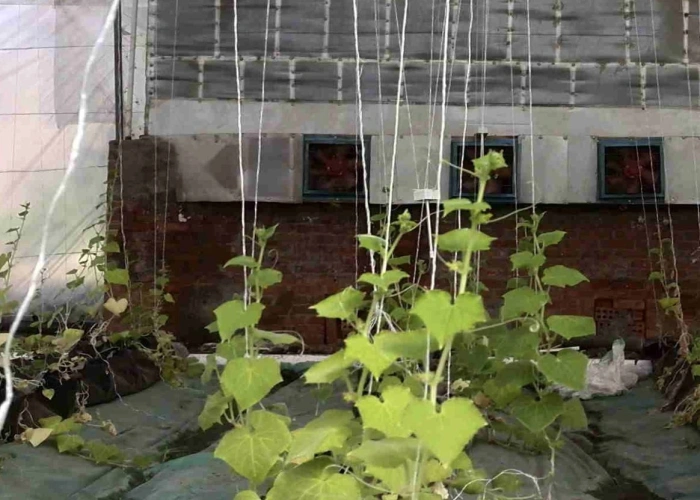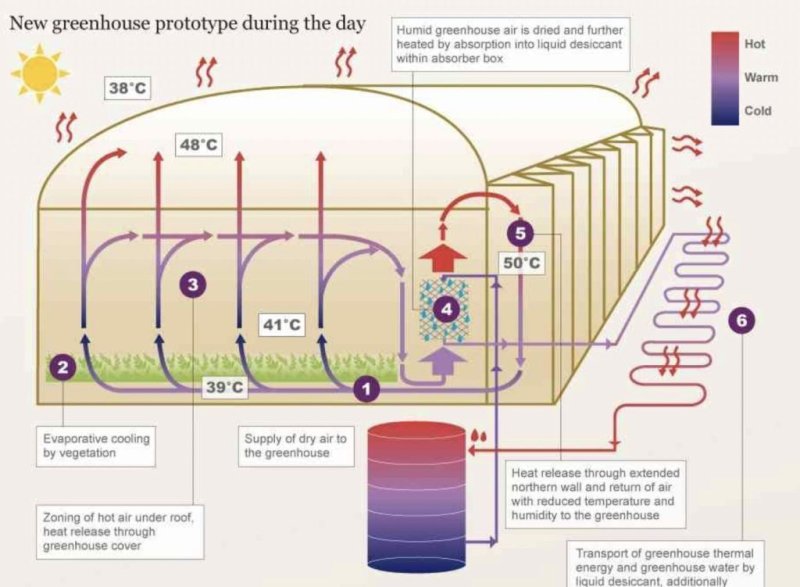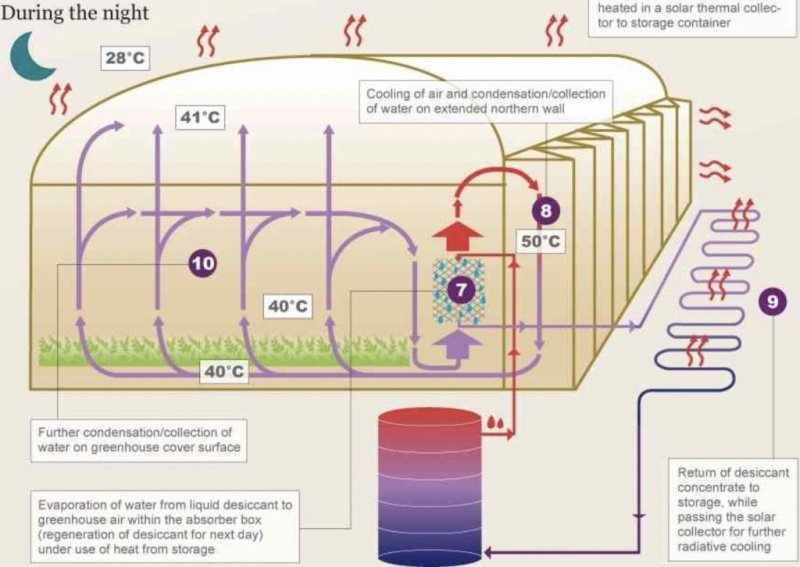CONSIRS

Adapted from the project website
Project scope and vision
The vision behind the project relates to the idea of producing food and nonfood biomass in new closed loop greenhouses. In the future, such greenhouses can be installed on areas with low and even very low water availability or availability of alternative water sources such as pre-treated wastewater and saline water. The system can help to provide additional supply of food and ligno-cellulosic biomass for construction- and industrial purposes.
A closed greenhouse keeps the water inside and provides a closed water cycle, with water evaporation by the plants and related water condensation on the inner surface of the greenhouse. Of course, the main obstacle of this idea is overheating. To overcome this problem, the project works on different means of cooling strategies. The most common solution would be to provide heat pump driven air chillers. This has been approved within the past but requires a lot of electric energy and is quite expensive and are not further investigated in this project. The main alternatives are listed below and provide the base for the research agenda in CONSIRS:
- Increasing the surface if the greenhouse: This can be done by new means of greenhouse construction providing a larger surface for heat transfer from the inside air to the environment. Also, air-to-air heat exchangers are used to increase the heat release and provide a solution for the refurbishment of existing greenhouses or as a back-up system for critical periods of overheating.
- Using the cool of the night. By providing heat storages with large thermal mass (mainly within water tanks), a reservoir of cool can be captured during night and can be distributed during the critical hours in daytime. For this process, specific heat air to water heat exchangers must be installed for the heat transfer from air to the storage during the day and vice versa from storage to air during night.
- Improving heat transfer between air and storage medium can be provided by also using the latent heat parts of the air (the energy involved in the air humidity). These methods include thermo-chemical absorption methods as well as multi-stage humidification (e.g. stepwise humidification by vegetation and additional air humidifiers)
- Replacing cool by heat: Heat from additional thermal solar collectors or hybrid PV-thermal collectors can be used to generate high concentrated thermo-chemical fluids. These fluids then support the absorption process in the greenhouse, generating higher heat transfers per cubic meter of air and a higher final storage temperature (higher storage density).

